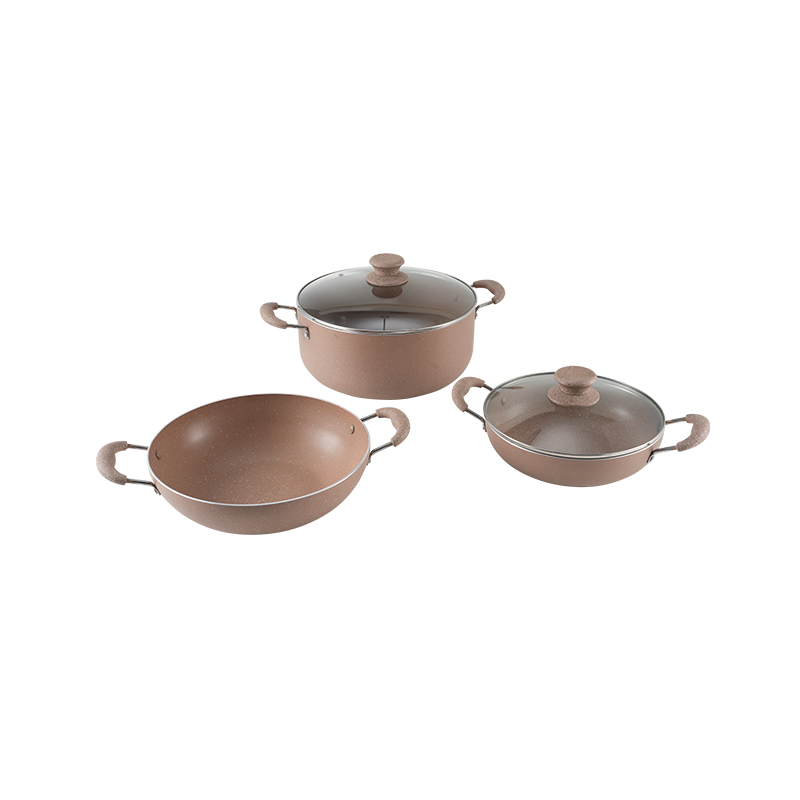How Do Glass Lids for Cookware Improve Cooking Visibility?
May 15, 2025
In the bustling world of culinary arts, where every detail counts, the humble glass lid for cookware has emerged as a game-changer, significantly enhancing cooking visibility and transforming the way we interact with our stovetops. This innovative cooking accessory has not only become a staple in modern kitchens but has also redefined the cooking experience by offering a clear window into the culinary process.
Glass lids for cookware are more than just a practical addition to our cooking utensil sets; they are a gateway to a new level of culinary precision. These transparent shields allow cooks to monitor the progress of their dishes without lifting the lid, thus preserving heat and moisture. This feature is particularly beneficial for dishes that require a delicate balance of temperature and humidity, such as simmering stews or braising meats. The ability to peek into the pot without disrupting the cooking environment is a testament to the ingenuity of glass lids and their role in modern cooking accessories.

One of significant advantages of glass lids for cookware is the immediate feedback they provide. Traditionally, cooks would have to rely on guesswork or intermittent taste tests to determine if a dish was ready. However, with a glass lid in place, the cooking process becomes a visual feast, where every bubble and simmer is on display. This transparency allows for adjustments to be made in real-time, ensuring that dishes are cooked to greation. The visibility provided by these lids is a boon for novice cooks and seasoned chefs alike, as it democratizes the cooking process and makes it more accessible.
The use of glass lids also extends to the realm of cooking utensil sets, where they complement a variety of tools designed to enhance the kitchen experience. A well-rounded cooking utensil set is incomplete without a high-quality glass lid that can withstand the demands of daily cooking. Whether it's a set of wooden spoons, spatulas, or whisks, the addition of a glass lid ties the ensemble together, providing a cohesive and visually appealing solution for all cooking needs. The synergy between glass lids and other cooking utensils are a testament to their importance in the kitchen, as they work in harmony to create a seamless cooking experience.
Moreover, glass lids for cookware have become a staple in the industry due to their durability and heat resistance. Unlike their plastic counterparts, which can warp or crack under high temperatures, glass lids maintain their integrity, ensuring safety and longevity. This durability is particularly important for those who invest in high-quality cookware, as it protects the investment and extends the life of the cookware. The resilience of glass lids is a testament to their structural value as a cooking accessory, making them a worthy addition to any cooking utensil set.
Another aspect of glass lids that cannot be overlooked is their aesthetic appeal. In an era where kitchen design and aesthetics are as important as functionality, glass lids add a touch of elegance and sophistication to any cookware. Their sleek, transparent design allows them to blend seamlessly with a variety of kitchen styles, from modern to traditional. The visual appeal of glass lids is not just skin-deep; it also extends to their practicality, as their transparent nature allows cooks to appreciate the beauty of their dishes as they cook, adding a sensory dimension to the cooking process.
The integration of glass lids into cooking utensil sets has also led to a resurgence in the popularity of certain cooking techniques. For instance, the ability to monitor the cooking process without lifting the lid has made techniques such as poaching and steaming more feasible for home cooks. These methods, which require precise control over heat and moisture, are now more accessible than ever, thanks to the clarity provided by glass lids. This accessibility has not only expanded the culinary repertoire of home cooks but has also introduced a new level of creativity and creativity experimentation in the kitchen.
 English
English русский
русский Français
Français Español
Español Português
Português عربى
عربى














